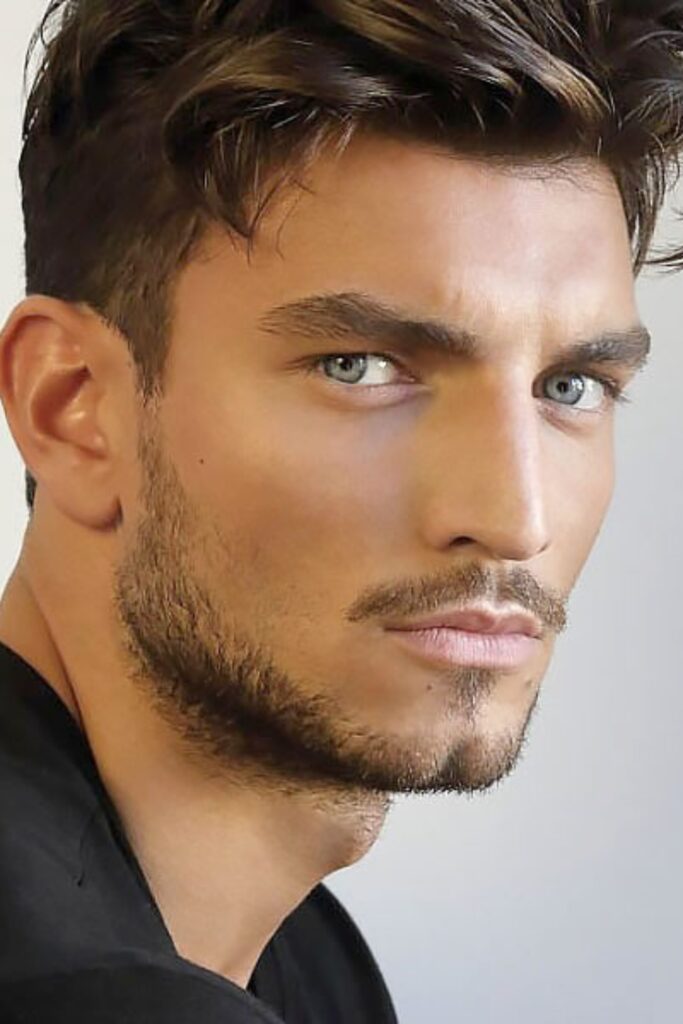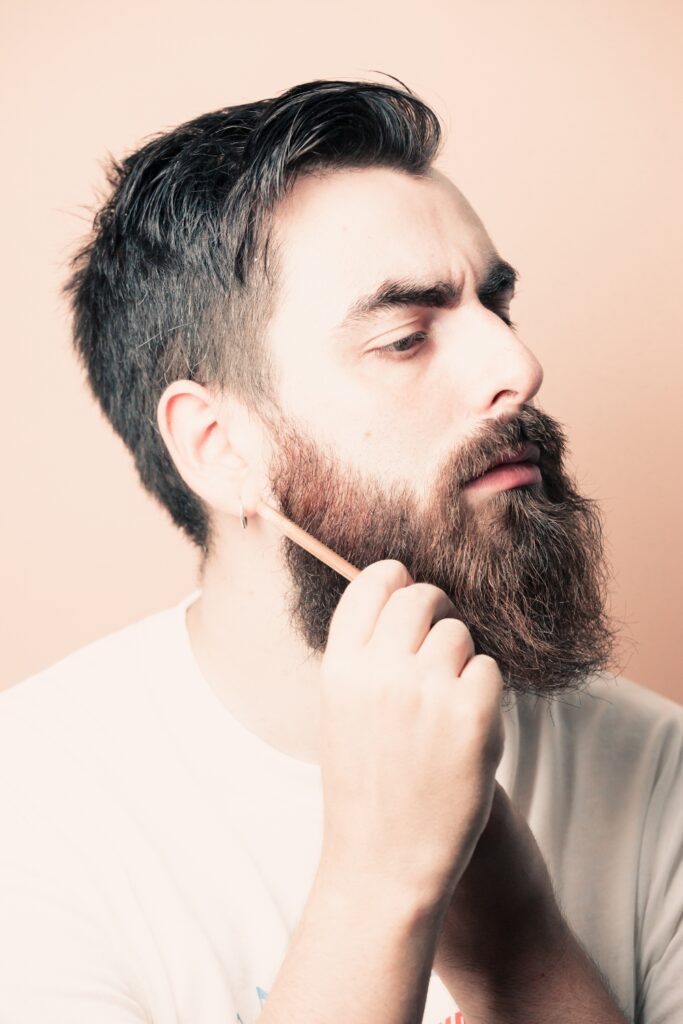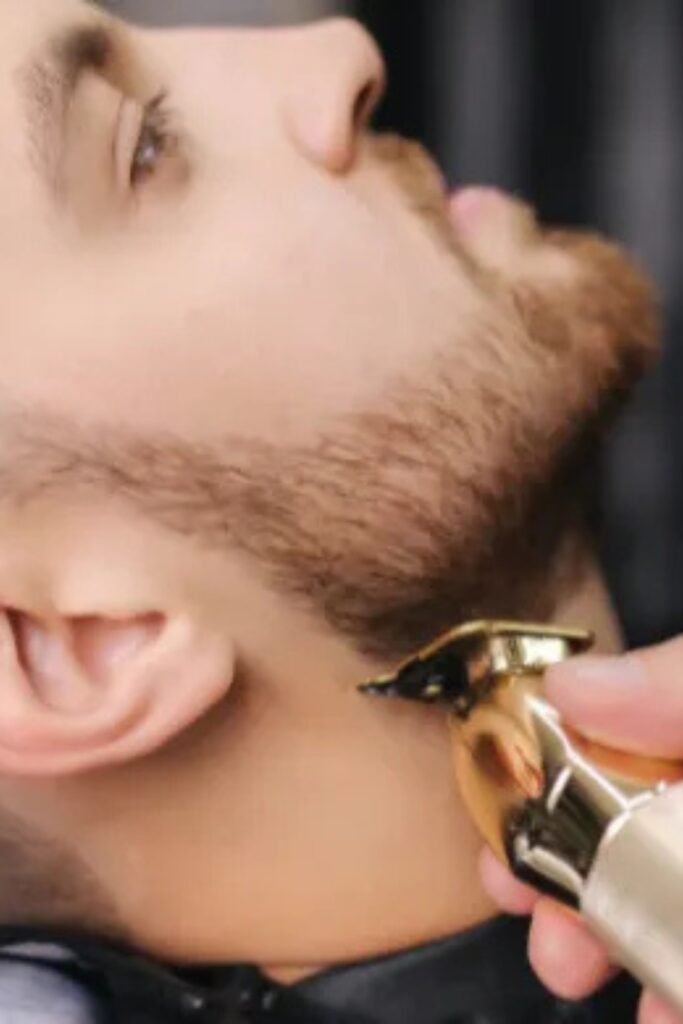How to Trim Beard for Jawline

Set your neckline just above your Adam’s apple, leave your jaw hair a little longer, and fade your cheeks and neck shorter.
This is the quickest approach to have a sharp jawline. This difference helps your jaw look firmer and more defined.
A neat line on the cheekbones frames the face and completes the image.
We’ll go over each stage in depth in this article. You’ll learn how to chart your beard development, get the neckline right, shape the cheek line, and use fading to add contrast.
You’ll know exactly how to trim like a pro and obtain the look you want at the end.
What Makes a Beard Define the Jawline?
A beard makes the jawline stand out by making a noticeable difference between the jaw and the rest of your face.
The trick is not how thick your beard is, but how you draw the lines and control the lengths.
A neckline and cheek line that are well-defined and fading might make a softer jaw look sharper.
Consider your beard as a form of natural contouring. When the hair on the jaw is darker and thicker, it forms a shadow that makes the bone structure stand out.
If the neckline is too high or the cheek line is too low, the shadow goes away and the jaw seems weaker.
You frame the jaw the same way a tailor frames shoulders with a suit by shaping with precision and keeping the proper parts longer.
The key to this is balance. You don’t want all of your hair to be the same length because that makes your features look flat.
You want the jaw to be a little longer, the cheeks to be a little shorter, and the neckline to be tidy.
That mix makes angles, brings out the lower portion of your face, and makes your jawline look stronger right away.
Tools You Need Before You Start
You can’t get a strong jawline with the incorrect equipment. At the very least, you need a beard trimmer with guards that can be changed to change the length.
A detail trimmer or edger helps you make neat lines along the neckline and cheeks. For hairs that stick out, keep a pair of small scissors on hand.
A single-blade razor or a guarded razor works best for sharp edges since it provides you accuracy without dragging on the skin.
A beard comb helps keep the hairs flat so that your cutting stays even. If you want symmetry, you need a mirror that lets you see both sides of your face and good lighting.
Last but not least, don’t forget to prep your skin. Wash your face with a light soap to get rid of oils, and then put on a pre-shave oil to make your strokes smoother.
After cutting, use beard oil to make the hair softer and a moisturizer without a scent to protect the skin.
Map Out Your Growth and Face Shape
You should know how your beard grows before you cut it. Feel the direction of growth by running your fingertips over your cheekbones, jaw, and neck.
Some sections grow straight down, while others twist or curve. Mapping this pattern helps you cut with the grain and prevent hurting yourself.
Next, check out the form of your face. If you have a round face, a little higher cheek line and a sharper angle toward the lips might make your face look thinner.
If your face is longer, keeping the cheek line broader and more natural will keep it from seeming overly narrow.
A softer cheek line that doesn’t box in the face is good for square faces.
Choosing the style of the cheek line now can help you avoid making mistakes later.
Most guys look better with a natural curvature, but a straighter line makes them look more chiseled.
Knowing how your hair grows and the structure of your face is the first step to cutting it in a way that makes your jaw look better instead of worse.
Set the Neckline Correctly
Most guys get the neckline wrong. If you cut it on the jawbone, you get rid of the shadow that makes the jawline look strong.
One finger above your Adam’s apple is the correct place. Now picture a shallow U-shape that goes from behind one ear, curves under the chin, and links to the other ear.
Everything below that line should be thrown away. You don’t need a protection or a razor to clean your neck with your trimmer.
Don’t irritate the skin by keeping strokes short and moving in the direction of hair growth.
The tidy neck maintains the jaw crisp instead of sloppy, and this lower line gives it more depth.
Don’t worry if you unintentionally cut too high. After about a week, let the beard develop and then lower the neckline.
Over time, maintaining this neckline the same can help you grow a beard that frames your face and makes your jawline stand out organically.
Shape the Cheek Line to Frame the Face
The top edge of your beard is your cheek line, and it has a huge effect on how clean your jawline looks.
A line that is too low makes the beard look like a thin strap and makes the jaw look weaker. If the line is too high, the beard may look uneven.
The idea is to find a natural curve from the sideburn to the corner of the mouth.
Stand in front of the mirror and picture a line going from the middle of your sideburn to the edge of your mustache.
That’s the best place for most men. To make the line look sharper, dip it slightly in the middle to make a gentle curve.
Follow your growth pattern and keep it mild for a more natural look. Use a detail trimmer or razor to get rid of any hairs that are over the line.
Check for symmetry on both sides all the time, because uneven cheek lines can ruin your whole image.
The cheek line frames the beard and helps the eye go straight to the jaw, which is what you want.
Trim and Fade to Highlight the Jaw
When the beard is different from the rest of the face, it shows off a strong jawline best.
That implies making the jaw a little longer, the cheeks a little shorter, and the neck the shortest.
This layering adds shadow to the jawline, making it look sharper without adding weight.
For the jaw area, start with your trimmer on a longer guard, like 6–9 mm.
For the cheeks, use a shorter guard, around 3-4 mm. Use the shortest guard, 1-2 mm, for the neck above the neckline to provide a seamless fade into the skin.
Work in little portions and mix them together slowly so that there aren’t any abrupt steps between lengths.
Don’t forget about the sideburns. Make them shorter at the temple and longer where they meet the jaw.
This keeps the change neat and makes the whole beard look planned.
The fade isn’t only for looks; it’s also a means to shape your jaw and give it that sharp edge that people notice right away.
Edge and Detail for Sharp Lines
Now that you’ve selected the length and fading, it’s time to make the edges sharper. The edges are what make your beard look sharp and professional.
Use a detail trimmer or razor to cut following the curvature of the neckline you already drew. Keep your strokes brief and light, and go with the grain to avoid lumps.
Do the same thing with the line on your cheek. Follow the form you made before and get rid of any stray hairs above it.
This keeps the top edge clean and lets the jawline stand out more.
For the mustache, cut along the lip line so that no hairs hang over, and then use scissors to cut off any hairs that stick out.
This is where symmetry comes in. Look at both sides in the mirror and tilt your head a little to make sure the lines line up.
A few minutes of edging can make your beard go from normal to sharp, and you can see the change right away in how sharp your jawline looks.
Style Options That Work Best for Jaw Definition
Not all beard styles make the jawline look the same. A short boxed beard is the greatest way to get a tidy, strong look.
It keeps the lines tight, the hair on the jaw longer, and the sides cut in, which makes the jaw look sharp.
A short, fading beard is a more modern look. This style gets smaller from the cheekbones to the jaw and then fades into the neckline.
The seamless change makes the lower area of your face stand out and attracts the eye there.
Heavy stubble is a good choice if you don’t want to have to do much to it.
A little growth of 5 to 10 days can provide depth without looking untidy, especially if the neckline and cheek lines maintain sharp.
Each of these types makes your jaw look better in a different way. You only need to choose the one that fits your style.
Conclusion
The way you cut your beard can give you a strong jawline, not just your genes. Setting the neckline just above the Adam’s apple is the most important factor.
The jaw should be a little longer, the cheeks and neck should be shorter, and the cheek lines should be clean.
The nice aspect is that this routine doesn’t take long. You can make precise lines and natural contrast in just a few minutes if you have the correct tools and a clear idea.
FAQs
What Beard Length Shows the Jawline Best?
A heavy stubble or a short beard around 6–10 mm brings out the jawline for most men.
This length casts a natural shadow that sharpens the lower face without hiding your features.
Just keep the neckline and cheek lines clean so the look stays intentional.
How Do I Prevent Razor Bumps on the Neckline?
Always shave or edge with the grain, not against it. Use short strokes, a sharp blade, and avoid going over the same spot multiple times.
Rinse with cool water afterward and apply a fragrance-free moisturizer or soothing gel. If bumps continue, use a trimmer instead of a razor for that area.
You may love to read!





